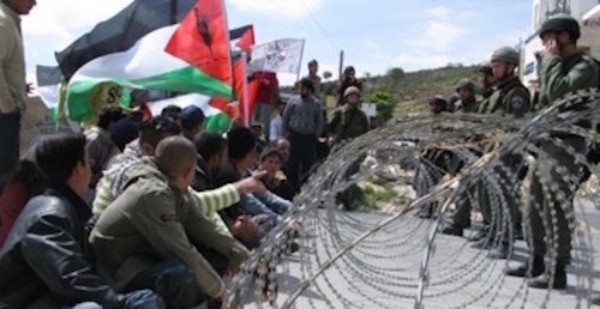-
ISM Tours USA : Bring the Palestinian resistance to speak to your community
Are you ready to take your activism for Palestine to the next level? In 2002, the International Solidarity Movement grabbed world attention by bringing volunteers from around the world to defend Palestine through nonviolent resistance. They stayed with resistance fighters in the Nativity Church in Bethlehem. They brought medical supplies to the besieged Palestinians in the ancient […]
-
Israeli armed forces fire live ammunition at protesters in Kafr Qaddum
9th March 2018 | International Solidarity Movement, al Khalil team | Occupied Palestine Today local Palestinian citizens gathered in their village of Kafr Qaddum, protesting against the illegal Israeli settlement of Kadumim and the road blockage that inhibits access to their village. Israeli armed forces fired copious rounds of tear gas, stun grenades, rubber coated […]
-
Resistance & Death in al Khalil/Hebron
9th March 2018 | International Solidarity Movement, al Khalil team | Occupied Palestine Friday at around 16.00, 24-year old Al Khalil resident Mohammad Zain al-Jabari was shot and killed by armed Israeli occupational forces during smaller clashes in Al Khalil, Hebron. He leaves behind his wife and his 4-year-old child. Al-Jabari was hit in the […]
Action Alert An Nabi Saleh Apartheid Wall Arrests BDS Bethlehem Bil'in Cast Lead Demonstration Denial of Entry Ethnic Cleansing Farmers Gaza Global Actions Hebron House Demolition International law Israeli Army Jerusalem Live Ammunition Nablus Ni'lin Prisoner Ramallah Rubber-coated steel bullets Settlement Settlers Settler violence Tear-Gas Canister Video



